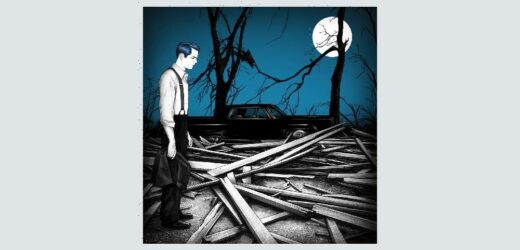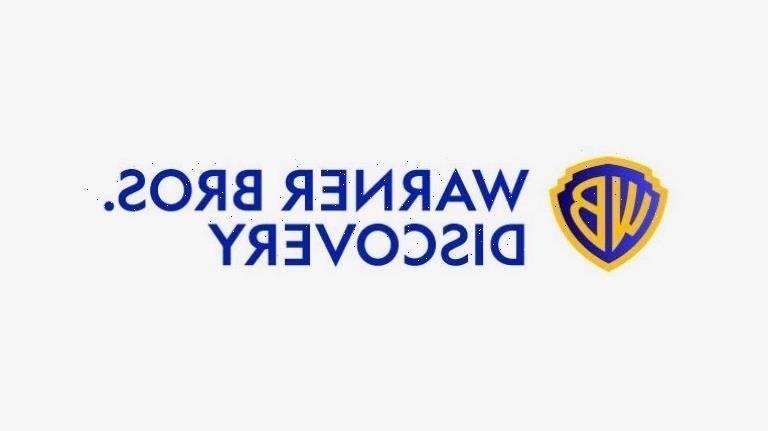If “Fear of the Dawn,” Jack White’s new solo album, were any more b-a-n-a-n-a-s than it is, he’d have to change his current color scheme of choice from blue back to yellow. And it’s not low-hanging fruitiness we’re talking about here. The record is tailor-made for headbangers and brainiacs, both — veering loudly between what used to be known in pre-metal days as “heavy music” and the kind of moment-by-moment gear-shifts and surprises that have usually been the province of headier prog-rock. You can imagine him hanging up a “Mad genius at work” sign on the studio door, but it’s at least as primal as it is experimental.
In short, this may be the most fun album Jack White has made or ever will make. That’s a statement that should quickly be amended with the warning that it won’t be everybody’s idea of a good time — not with ferocious, free-rage songs that bounce every few bars from one burning riff to an even more incendiary one, like the ADHD-afflicted love child of Metallica and a jazz fusion group. (“Queens of the Stone Age meet Yes out in the garage” also came to mind as an introductory simile.) But if you let yourself go with White’s brand of attention-deficit disorderly conduct, what a bonkers blast “Fear of the Dawn” is … thrilling enough to almost singlehandedly make up for how unexciting most of the rest of rock ‘n’ roll is at the moment.
The real fear some fair-weather White fans may have, after hearing that the new album shares some characteristics of his last solo effort, 2018’s “Boarding House Reach,” is that it will be a full-length expansion of some of the loonier, Zappa/Beefheart-ian moments on that effort. Setting aside for now an argument that “Boarding House” was actually pretty underrated, “Fear of the Dawn” should overcome most of those suspicions, just because of how hard, hearty and guitar-riff-based the whole thing is, which is what more people than not are going to want out of a Jack White album. The fact that he seems to be squeezing three songs into one, throughout most of the record? He may lose a few, among the contingent that just wants to hear a single riff that’s easily adaptable as ballplayer walk-up music in baseball stadiums. But if you’re more of a musical polymath, or maybe just a little cuckoo for Cocoa Puffs, this might well be the guitar-rock album you’ve been waiting on for a few years.
I’ll admit I wavered a bit about the album in early listens. My first response was to crank it up, literally LOL at the audaciousness of some of the moment-to-moment wild turns and wheelies, and do a full-on Mike Myers in the driver’s seat, albeit shifting between back-and-forth and up-and-down banging, given the music’s shifts in mood and momentum. On second listen, I found the album exhausting: Why can’t he pick a lane? Why is there a different guitar tone every 20 seconds? Is this, like, a sound effects record? And then, from the third listen on, I was convinced I was right the first time, and this really is an over-caffeinated blast, through and through. Maybe just don’t put it on right as you’re leaving the spa.
Let’s get the two weirdest tracks out of the way first, for anyone still seeking therapy for their “Boarding House” phobia. Both involve way-from-left-field samples: Cab Calloway in (obviously) “Hi-Di-Ho,” the Manhattan Transfer (!) and William S. Burroughs (!!) in “Into the Twilight.” Not coincidentally, maybe, these are the two tracks that come off as quasi-funky, even danceable, due to White leaving a lot of room for bass lines around the samples. Q-Tip of A Tribe Called Quest is the sole non-sampled guest star, riffing on Calloway with some silliness along the lines of “You ain’t taking no jive / Speaking of Jive, I think I was on that label.” “Into the Twilight” combines not one but two M-Transfer songs popular with the middle-brow — the dance hit “Twilight Zone/Twilight Tone” and the scatty “vocalese” of “Night in Tunisia” — with some spoken-word commentary from one of the last century’s most revered avant-gardists, Burroughs. If the entire album were an extreme tribute to Burroughs’ cut-up philosophy, it might be a bit much — but having just two songs that go that gonzo with the sampling is just the right amount of seasoning.
Elsewhere, it’s just Jack being Jack, at his loudest and squall-iest, save for passages when everything drops out except a thick bass line, jazzy drum undertow or fuse-blowing guitar blast, or when single-time turns into double-time or vice versa. Most of the songs pile riff upon riff, as if what’s really needed to solve the current deficit of quality rock is, you know, a 14- or 21-nation army.
The variations are fun to follow and try to diagram: “Eosophobia” (literally the Greek term for the album title) starts off with what could be described as a variation on dub reggae, before, with one of White’s trademark distorted screams, it goes into a kind of Who-style riffage. Then the track lightens up a little with some comforting Wurlitzer electric piano, then leans into Daru Jones funkily taking his syncopation out on the rims of his drums. (It’s one of a minority of tracks where White uses his road band instead of playing everything himself.) It’s a roller coaster, but one where the fear factor is left strictly to the title.
If you’re wanting something outrightly reminiscent of the White Stripes, the closest thing is the almost straightforward “Morning, Noon and Night,” which has the almost nursery rhyme-like familiarity of some of that duo’s classics. But even then, detours abound; imagine Keith Emerson, of ELP, suddenly playing organ over a Stripes track, as it moves on to sounding like a 1970s Argent outtake, and turning for just a little bit into a basic Foghat boogie. You even get a “Helter Skelter” fake fadeout that is destined to fade back in, just because.
Does White have anything to say here? Beyond the uncertain divorce scenario amusingly played out on the opening track, “Taking Me Back,” and then never revisited, there’s not much in the way of cohesive narratives in these songs, which is just fine, given that the music itself isn’t going for that. There are plenty of declarative statements that may or may not mean anything on their own. “You think that the sun answers to no one / But you’re wrong!” he howls, like the guy in the Temptations’ “Can’t Get Next to You” who can control almost all the elements. If there’s a recurring theme to the album, as suggested by its title, it’s that daylight sucks. Nighttime is the right time, it seems, not just for love but for the pure, unbridled mania that is the hallmark of this album.
Earlier, it was noted that this might be White’s most fun collection to date. It’s also certainly his least well-balanced; while there are huge variations within each song, collectively they’re nearly all of a hyperbolic piece. But it’s not as if he’s given up writing other types of material. The final song on “Fear of the Dark” is maybe the truest outlier: “Shedding My Velvet” actually slows down enough to be something the rest of the album isn’t: emotional. If that suddenly reminds you that there are big chunks of what White is about that are missing in this balls-out lunacy, well, he has already promised a separate album coming this fall, “Entering Heaven Alive,” due in July, which will represent his softer side.
But props to him for sustaining a mood over an entire album, and saving other styles for other projects, rather than thinking a single LP has to employ every tool in his box. “Fear of the Dawn” benefits from being so single-mindedly devoted to capturing a stream of consciousness that’s moving about as fast as the Colorado River, and would generate just about as much electricity, dammed up. When he’s not doing the acoustic stuff, White’s voice nearly always sounds like he’s on the verge of hysteria, which is a part of why he carries such a powerful presence in modern rock, guitar heroics aside. Now, he’s finally made an album every bit as hysterical as that trademark howl.
Source: Read Full Article


